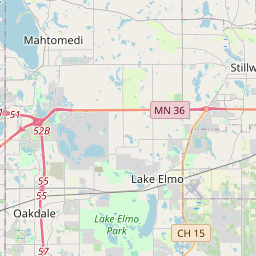Earle Brown and the Brooklyn Farm
Historical marker location:
6155 Earle Brown Drive, Brooklyn Center, Minnesota
( Marker can be reached from Earle Brown Drive, 0.3 miles east of Summit Drive North, on the left when traveling east.)
Marker installed: 1998







© OpenStreetMap contributors
More history nearby
The Mall of America, located in Bloomington, Minnesota, is the largest mall in the United States, with over 5.6 million square feet of retail space.
About Hennepin County
Hennepin County Timeline
Hennepin County, located in the state of Minnesota, has a rich history that stretches back to prehistoric times. The area was originally inhabited by the Dakota Sioux Native American tribes, who thrived along the banks of the Mississippi River. European exploration and settlement began in the 17th century, when French fur traders arrived in search of valuable pelts. In the late 18th century, the region came under American control following the Louisiana Purchase, and the United States established Fort Snelling in 1820 to control the fur trade and maintain relations with the Native Americans.
The 19th century brought significant changes to Hennepin County, largely driven by industrialization and the growth of Minneapolis, its largest city. The construction of the Mississippi River locks in the 1860s allowed for easier navigation and trade, leading to a boom in lumber and flour milling industries. Minneapolis became known as the "Flour Milling Capital of the World" and attracted thousands of immigrants seeking work and opportunities. With its thriving industry, the city expanded rapidly, and Hennepin County became a center of commerce and culture.
The early 20th century brought further growth and development to Hennepin County. The region continued to prosper, with advancements in transportation, such as the construction of highways and railroads. The Twin Cities, Minneapolis and St. Paul, began to flourish as major metropolitan areas, attracting businesses, immigrants, and diverse communities. Hennepin County played a significant role during World War II, contributing to the war effort through manufacturing and defense industries.
In recent decades, Hennepin County has experienced continued growth and economic diversification. Minneapolis has evolved into a thriving hub for various industries, including technology, healthcare, and finance. The county has also emphasized sustainable development and environmental conservation, focusing on initiatives like green spaces, bike lanes, and public transportation. Today, Hennepin County is a vibrant, diverse community that blends its rich history with modern advancements, offering residents and visitors a wide range of opportunities and attractions.
The 19th century brought significant changes to Hennepin County, largely driven by industrialization and the growth of Minneapolis, its largest city. The construction of the Mississippi River locks in the 1860s allowed for easier navigation and trade, leading to a boom in lumber and flour milling industries. Minneapolis became known as the "Flour Milling Capital of the World" and attracted thousands of immigrants seeking work and opportunities. With its thriving industry, the city expanded rapidly, and Hennepin County became a center of commerce and culture.
The early 20th century brought further growth and development to Hennepin County. The region continued to prosper, with advancements in transportation, such as the construction of highways and railroads. The Twin Cities, Minneapolis and St. Paul, began to flourish as major metropolitan areas, attracting businesses, immigrants, and diverse communities. Hennepin County played a significant role during World War II, contributing to the war effort through manufacturing and defense industries.
In recent decades, Hennepin County has experienced continued growth and economic diversification. Minneapolis has evolved into a thriving hub for various industries, including technology, healthcare, and finance. The county has also emphasized sustainable development and environmental conservation, focusing on initiatives like green spaces, bike lanes, and public transportation. Today, Hennepin County is a vibrant, diverse community that blends its rich history with modern advancements, offering residents and visitors a wide range of opportunities and attractions.
Hennepin County Timeline
This timeline provides a condensed summary of the historical journey of Hennepin County, Minnesota.
- 1852: Hennepin County is established by the Minnesota Territorial Legislature.
- 1855: The city of Minneapolis is incorporated within Hennepin County.
- 1860: Hennepin County becomes the most populous county in Minnesota.
- 1878: The Minneapolis City Hall is completed, becoming a notable landmark in Hennepin County.
- 1883: The Hennepin County Library is founded.
- 1893: Lake Minnetonka becomes a popular recreational destination in Hennepin County.
- 1905: The Minnesota State Fairgrounds move from Ramsey County to Hennepin County.
- 1926: The first major highway, the Theodore Wirth Parkway, is completed in Hennepin County.
- 1957: The Interstate Highway 35W bridge is constructed, connecting Hennepin County with neighboring counties.
- 1971: The Hennepin County Government Center is completed, housing various county administrative offices.
- 2008: Hennepin County becomes the 34th most populous county in the United States.